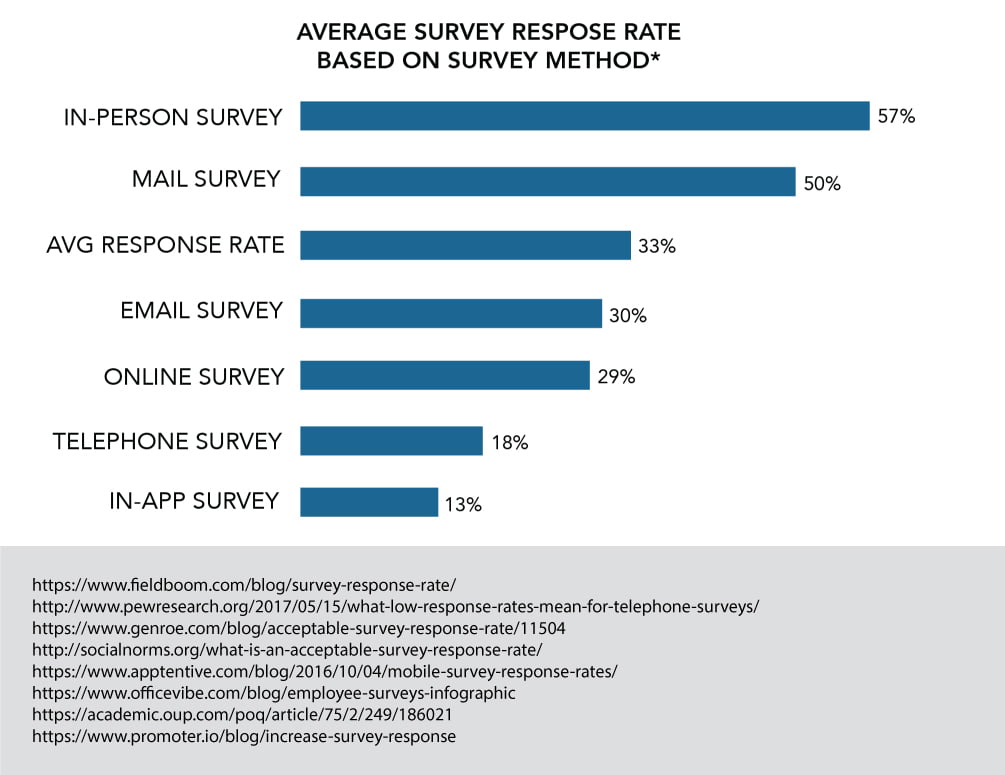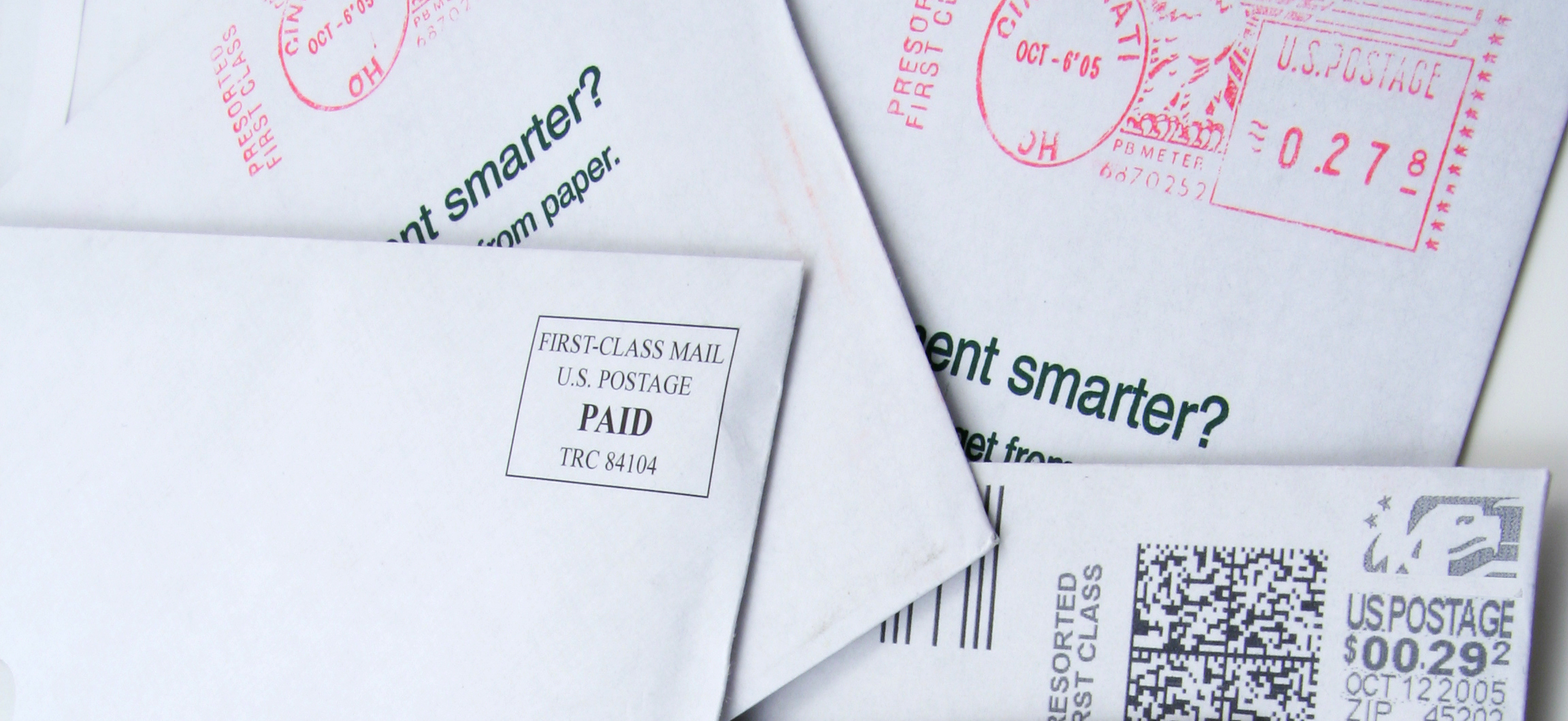Mail surveys are one of many quantitative research data collection methods that helps answer the “why” and “how” of human thoughts and behavior. It is an integral part of political & social science, social work, and education research.
Believe it or not, mail surveys are still among the most effective survey methods in the research industry, yielding higher response rates, more accurate data, and greater cost-effectiveness than online, email, phone, and in-app methods. According to April 2018 aggregate data by Pew Research and industry analysts, survey method response rates perform as follows:
High mail survey participation is attributed to several factors, including :
-
- Trust – Respondents typically trust letters addressed to them over online methods, which can be perceived as spam. They also tend to have greater trust in actually receiving their gift incentive, as there is much online gamesmanship involving gift incentives that come with strings attached.
- Deliverability – Physical addresses are more reliable than email addresses, which can change frequently with no forwarding address.
- Noticeability – Physical mail arrives in a less cluttered environment than email or online communities..
- Convenience – Respondents can fill out the survey in their own time, with the actual hard copy serving as a reminder to complete it.
Data Integrity
Inaccuracies and respondent bias are the greatest barriers to achieving quality data. Of course, survey science aims to minimize these risks. Mail survey methodology is widely regarded as the gold standard in data accuracy – and this still holds true in the digital age. Phone surveys, once the darling of the industry, have been impacted by ‘sample selection’ bias due to the decline of landlines. Email and online surveys are typically affected by ‘social desirability’ bias, in which respondents give the answer that best aligns with their carefully-honed image. In-person survey research can have a similar effect, in which respondents do not answer as honestly as they would in a private setting. Of course, there are many factors to weigh in when choosing a survey method, including time, cost, and availability of respondent information, making each method or combination of methods worthy of consideration.
Cost-Effectiveness
The cost of a medium-scale survey (i.e, 5,000 to 50,000 respondents) in 2018 is approximately $5,000.* Comparable phone and in-person surveys cost about 50% to 150% more, respectively. Email and online surveys are least expensive, starting at $20 to $500 per month, although custom programming can raise these numbers considerably. Factoring in data quality, however, survey mailing services are often the most cost-effective.
You should do a mail survey if:
-
- You want high-quality data.
- You have a complete list of names and addresses of the population to be surveyed or plan to purchase a sample.
- Your audience has an interest in the content of your survey.
- You’re not in a hurry to get results.
While digital surveys certainly have a bright future in the research industry, they have a long way to go before they can account for survey bias, data integrity, and cost-effectiveness. They may be most useful, at this point, as part of a multi-modal effort (i.e. a survey with both print and digital elements).
If you’d like more information on survey scanning, survey science or mail surveys in general, contact us today.








Leave A Comment